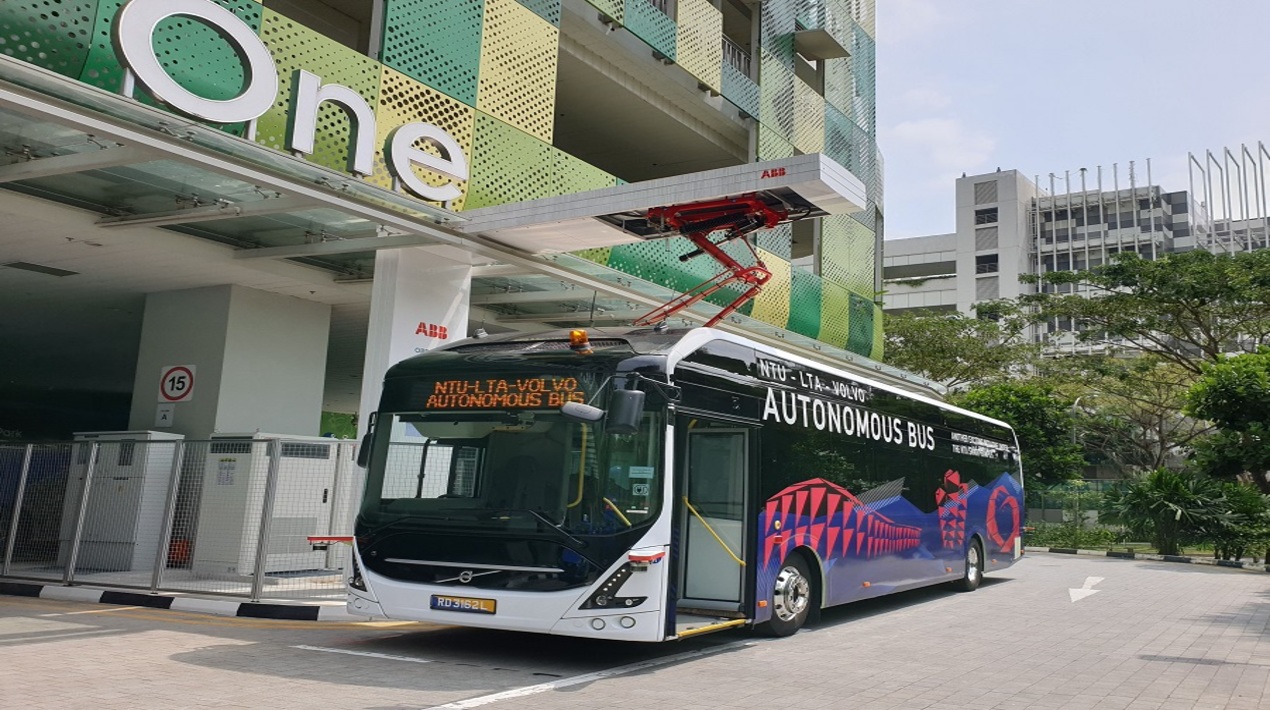
With Singapore’s plans to switch its entire fleet of buses – numbering around 5,800 now – to electric and hybrid buses by 2040, fast charging systems that can cater to high power output – over a few hundred times higher than those required by electric cars – will be required.
To tackle this high-power consumption during fast-charging, scientists from Nanyang Technological University, Singapore (NTU Singapore) and a tech start-up will be developing a high-power density charge and converter system for electric vehicles.
Current electric vehicle chargers are relatively low powered and may take many hours to fully recharge the large capacity batteries in electric buses. The ideal scenario would be for an electric bus to fast charge during the driver’s usual break time at the bus interchange and to continue the scheduled route thereafter without compromising commuter travel time, safety and comfort.
The new power system will be piloted in a first of its kind fast-charging platform called the “High Power Energy Plaza”, which can charge multiple electric vehicles quickly with its high-power DC chargers, with capacities up to 550 kilowatts (kW). It can also support low-power applications such as charging electric bikes, cars and light commercial vehicles.
The Plaza will be designed to operate in different urban environments, to meet both electric vehicles (EVs) and power grid requirements as well as cater to multiple configurations of EV chargers made by different brands.
These recent developments are in line with the Government’s mission to further encourage the adoption of shifting from traditional petrol-fuelled vehicles to electric vehicles or EVs. The Government will allocate S$30 million for projects and initiatives supporting the shift. They will also introduce more incentives to narrow the “cost differential” between electric cars and internal combustion engine cars, announced Finance Minister Heng Swee Keat in his Budget speech.
As reported by OpenGov Asia, as part of efforts to expand Singapore’s electric vehicle (EV) charging infrastructure, all Housing and Development Board (HDB) car parks in at least eight towns will be fitted with EV chargers by 2025. The aim is to make every HDB town an “EV-ready” town by the 2030s, said Transport Minister Ong Ye Kung.
The eight – Ang Mo Kio, Bedok, Choa Chu Kang, Jurong West, Punggol, Queenstown, Sembawang and the upcoming Tengah town – are part of a “town-centric” approach being taken for the installation of charging points, said Minister.
The towns were chosen as they are spread across Singapore and have a high concentration of car parks with an existing electrical capacity to support charging point deployment, said the Land Transport Authority (LTA). In the near term, charging points will be installed in a variety of public car parks island-wide where suitable and where there is spare electrical capacity, it added.
The agency noted that the first tender for charging points – more than 600 of them at about 200 public car parks – was issued by the Urban Redevelopment Authority (URA) and LTA last year. Accordingly, an industry consultation on the private sector’s participation in public charger deployment will be launched later. The agency assumes one-third of cars are EVs by 2030, so this translates into an EV to charging point ratio of about 5:1, noting that estimates of the optimum ratio between EVs and charging points range from five to 10 vehicles per point.
For the national public charging standards, Minister also said that the country has settled on Type 2 for AC charging and CCS 2 for DC or fast charging. With a range of about 400km to 500km per charge, a typical EV user would need to charge about once every five days, adding that charging points would need to be shared, especially in public car parks. That way, the Government will be able to minimise electrical infrastructure upgrades and tap on the spare electrical capacity in all public car parks and install charging points as quickly as possible.
















